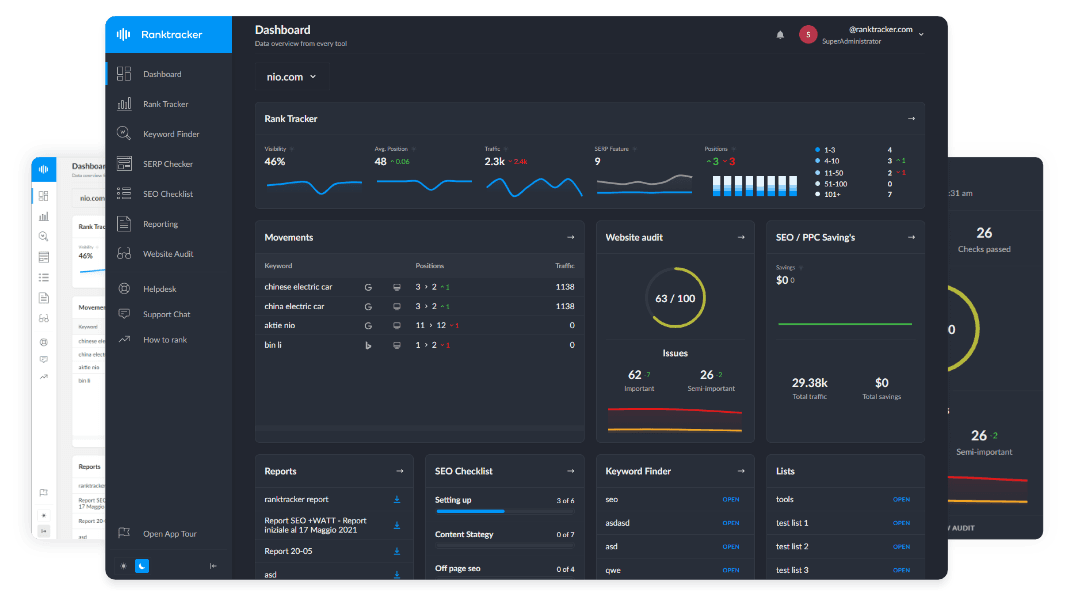Intro
Running a successful Amazon deal blog in today’s crowded digital landscape isn’t just about listing the latest discounts—it’s about strategic SEO execution. From understanding user search intent to perfecting your site structure, smart SEO can be the difference between obscurity and high-ranking visibility. This article breaks down the exact tactics top Amazon affiliate sites use to outrank their competitors and dominate the deal-hunting niche.
Why SEO Matters for Amazon Deal Blogs

Amazon deal blogs rely heavily on search traffic. Organic visits from Google make up a significant portion of their audience and can drive high-intent users who are already looking for specific discounts or product types. Without proper SEO, even the best deals may never be seen. For Amazon affiliates, optimizing for search engines ensures long-term visibility and stable earnings, even as individual deals change daily or weekly.
Nailing Keyword Research and Clustering
Successful deal blogs don’t just chase random keywords—they use keyword clustering to dominate topic categories. Instead of targeting only "Amazon laptop deals," top sites build entire clusters around related search terms like "cheap laptops on Amazon," "best budget laptops," "Amazon tech sales," and "student laptop discounts."
Keyword clustering helps in:
- Creating multiple entry points via long-tail keywords
- Structuring internal links naturally
- Boosting topical authority on a subject
By grouping keywords around themes (like electronics, baby products, or kitchen appliances), deal blogs build SEO silos that Google loves.
Leveraging Schema Markup for Rich Snippets
Schema markup—structured data code added to your blog—makes your site stand out in search results. Deal blogs can benefit by implementing:
- Product schema: for displaying star ratings, price drops, and availability.
- FAQ schema: to surface common buyer questions with dropdowns in Google.
- Breadcrumb schema: for better site hierarchy display.
These enhancements improve click-through rates and allow your blog to capture more screen real estate on mobile and desktop search results.
Using Internal Linking to Build Authority
Top-performing deal sites rarely have orphaned pages. They build robust internal link structures that pass authority between posts and help users navigate between related deals.
Effective internal linking:
- Signals relevance to search engines
- Lowers bounce rate by encouraging users to explore
- Distributes authority to newer or lower-ranking pages
For example, a post about “Best Amazon Home Deals” should naturally link to pages on “Amazon Kitchen Appliance Discounts” or “Top Vacuum Cleaner Deals.”
Fast, Mobile-Optimized User Experience
With Google’s mobile-first indexing, speed and responsiveness are essential. The best Amazon deal blogs use lightweight themes, optimized images, and lazy loading to ensure quick page load times. Many use tools like Google PageSpeed Insights or Core Web Vitals to benchmark performance.
Features like sticky navigation, mobile-friendly CTAs (call-to-actions), and simple filtering improve user experience, which contributes indirectly to better SEO performance through lower bounce rates and longer session durations.
Examples of Well-Optimized Coupon Platforms
Two standouts in the Amazon deal blogging space are SaveMyCent and Bountii. These platforms are well-optimized examples of how coupon and discount sites can balance affiliate revenue generation with SEO best practices.
- SaveMyCent focuses on user intent by categorizing deals by interest (e.g., parents, students, tech lovers) and deploying SEO-optimized titles, descriptions, and meta tags that align with those audiences.
- Bountii applies smart keyword targeting and clusters their posts in a way that supports internal navigation and signals topical relevance to Google. Their fast-loading pages and minimalistic layout further aid in ranking competitively.
These platforms demonstrate how focusing on both content relevance and technical SEO leads to greater visibility in highly competitive spaces.
Long-Tail Content Strategies for Seasonal and Evergreen Deals
Many deal bloggers overlook the power of long-tail, evergreen content. Posts like “Best Back-to-School Amazon Deals for Students” or “Holiday Gift Ideas Under $25 on Amazon” can drive consistent traffic year after year.
The All-in-One Platform for Effective SEO
Behind every successful business is a strong SEO campaign. But with countless optimization tools and techniques out there to choose from, it can be hard to know where to start. Well, fear no more, cause I've got just the thing to help. Presenting the Ranktracker all-in-one platform for effective SEO
We have finally opened registration to Ranktracker absolutely free!
Create a free accountOr Sign in using your credentials
By publishing early, optimizing for seasonal keywords, and updating past content with fresh deals or links, bloggers can retain strong rankings and repeat traffic. Combining current coupon codes with evergreen hooks is a powerful SEO play.
Content Refresh and Update Cycles
Google rewards freshness, especially in niches like deals and coupons where relevancy changes rapidly. The most successful Amazon deal blogs revisit and refresh their content regularly.
Best practices include:
- Updating publish dates
- Adding new deals and removing expired ones
- Re-optimizing meta tags and headlines
This helps retain SERP rankings and keeps bounce rates low, since users are more likely to stay on pages offering up-to-date information.
Backlink Acquisition Through Partnerships and Outreach
A critical component of SEO is earning high-quality backlinks. Amazon deal blogs build relationships with other blogs, influencers, and even brands to gain mentions.
Common backlink strategies:
- Guest posting on related finance, parenting, or lifestyle blogs
- Collaborating with influencers to promote seasonal deal roundups
- Participating in community forums and Reddit threads to build awareness
Every quality backlink helps improve domain authority and keyword rankings.
Social Proof and User Engagement
Google pays attention to user engagement signals. Deal blogs that encourage comments, shares, and on-page interactions tend to rank better.
Adding social proof—like real-time user reviews, comment sections, or live counters (“132 people used this coupon today”)—can improve engagement. It also builds trust, making users more likely to return or convert.
Tracking Performance and SEO ROI
Lastly, successful deal bloggers measure what works. They use tools like:
- Google Analytics
- Google Search Console
- SEMrush or Ahrefs
- A/B testing plugins
By tracking click-through rates, bounce rates, keyword positions, and affiliate conversions, they refine strategies and double down on high-performing content clusters.
Optimizing for Voice Search and Featured Snippets*
With the rise of smart speakers and voice assistants, many users now search with conversational queries like “What are today’s best Amazon deals?” or “Where can I find budget tech discounts?” Optimizing content to match these natural-language searches helps capture this growing audience segment.
To do this:
- Include FAQ sections with concise answers
- Use question-based headers (H2 or H3)
- Incorporate natural phrasing in your content
Securing featured snippet positions also increases visibility and click-through rates on both voice and traditional search platforms.
Implementing Clean URL Structures and SEO-Friendly Permalinks
Well-structured URLs improve crawlability and usability. Successful deal blogs avoid complicated parameters or overly long links.
The All-in-One Platform for Effective SEO
Behind every successful business is a strong SEO campaign. But with countless optimization tools and techniques out there to choose from, it can be hard to know where to start. Well, fear no more, cause I've got just the thing to help. Presenting the Ranktracker all-in-one platform for effective SEO
We have finally opened registration to Ranktracker absolutely free!
Create a free accountOr Sign in using your credentials
Good example: yourblog.com/amazon-laptop-deals
Bad example: yourblog.com/page.php?id=1234&category=deals
Clean URLs should include target keywords, remain consistent across categories, and avoid unnecessary clutter. This aids in indexing and helps users trust and share links more easily.
Using Heatmaps and Behavior Analytics to Guide SEO
Top Amazon deal blogs also go beyond traffic data to understand how users behave on their site. Tools like Hotjar and Crazy Egg provide heatmaps and session recordings that reveal:
- Which content blocks attract the most attention
- Where users drop off
- Which CTAs get the most clicks
These insights help bloggers optimize page layouts, reposition high-value links, and adjust content flow to improve both SEO and conversions.
Final Thoughts
The success of Amazon deal blogs lies not just in finding good discounts, but in mastering the SEO techniques that attract and retain the right audience. With strategic keyword clustering, internal linking, schema markup, and fast user experience—as demonstrated by leaders like SaveMyCent and Bountii—even new deal blogs can rise to the top. For bloggers willing to commit to SEO best practices and ongoing optimization, the Amazon affiliate space still holds immense potential for sustainable traffic and revenue.



